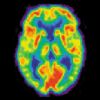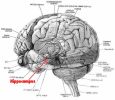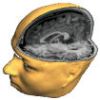|
.
Evolutionary Psychology mind and behaviour |
|
|
|
The
mind: A modular human mind
A key tenet of evolutionary psychology is that the human mind at birth is not a tabula rasa ie a blank slate (tabula rasa is a concept first introduced by 18th century Scottish enlightenment philospher, John Locke. ).
Instead as Jerry Fodor in 1983 proposed in his book “The modularity of mind”, that humans are born with a modular mind, which is collectively comprised of special neural structures known as modules (Osaka, 2003, p.70). From the moment we are born, these modules collectively constrain and shape how we perceive and interact with the physical and human world (plus how we characteristically function and behave as human beings) (Bjorklund, 2003, p. 837) So what are these modules?
Modules are neural structures comprised of organised connections of brain neurons that “determine how the brain processes information” (Cosmides & Tooby, 1997). Each module metaphorically contains an algorithm (ie a set of instructions, or “rules”, or a “computer program”) that that enable it to perform a domain-specific function such as interpreting visual information (ie eyesight), auditory information (hearing) and emotions (Langs,1996,p.103). Furthermore each module functions as an independent domain-specific “computational unit” (Osaka, 2003, p.70).
How are these
domain-specific modules structured? There are 2 fundamental aspects to the
structure of modules: 1.) Informational encapsulation. Each module is a self-contained computational unit together with its own algorithms and knowledge database (which it draws upon to process domain-specific information). It is also unable to draw upon the algorithms of other modules nor is any other module able to conversely draw upon its own algorithms. For example the face-detection module does not have access the algorithm/rules from the mate-selection module. 2. Domain specifity Each module is only activated only when it receives inputs that are relevant to the adaptive problems associated with its specific domain e.g. face-detection. For example the face-detection module will only be activated when a person receives visual input (from a visual-processing module) that suggests a familiar face. (Evans & Zarate, 1999, pp. 148-149; Cosmides & Tooby, 1997)
|
|














